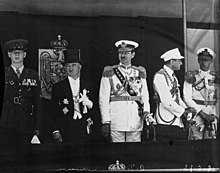
Michael I was the last King of Romania, reigning from 20 July 1927 to 8 June 1930 and again from 6 September 1940 until his forced abdication on 30 December 1947.
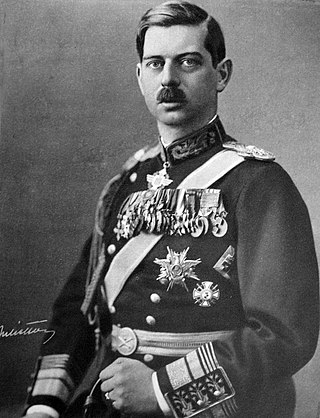
Carol II was King of Romania from 8 June 1930, until his forced abdication on 6 September 1940. As the eldest son of King Ferdinand I, he became crown prince upon the death of his grand-uncle, King Carol I, in 1914. He was the first of the Hohenzollern kings of Romania to be born in the country, as both of his predecessors had been born in Germany and came to Romania only as adults. As such, he was the first member of the Romanian branch of the Hohenzollerns who spoke Romanian as his first language and was also the first member of his royal family to be raised in the Orthodox faith.

Ferdinand I, nicknamed Întregitorul, was King of Romania from 1914 until his death in 1927. Ferdinand was the second son of Leopold, Prince of Hohenzollern, and Infanta Antónia of Portugal,. His family was part of the Catholic branch of the Prussian royal family Hohenzollern.

Carol I or Charles I of Romania, was the monarch of Romania from 1866 to his death in 1914, ruling as Prince (Domnitor) from 1866 to 1881, and as King from 1881 to 1914. He was elected Prince of the Romanian United Principalities on 20 April 1866 after the overthrow of Alexandru Ioan Cuza by a palace coup d'état. In May 1877, Romania was proclaimed an independent and sovereign nation. The defeat of the Ottoman Empire (1878) in the Russo-Turkish War secured Romanian independence, and he was proclaimed King on 26 March [O.S. 14 March] 1881. He was the first ruler of the Hohenzollern-Sigmaringen dynasty, which ruled the country until the proclamation of a socialist republic in 1947.

Iuliu Maniu was a Romanian lawyer and politician. He was a leader of the National Party of Transylvania and Banat before and after World War I, playing an important role in the Union of Transylvania with Romania.

Prince Albert of Prussia was a Prussian general field marshal, Herrenmeister of the Order of Saint John from 1883 until his death, and regent of the Duchy of Brunswick from 1885, also until his death.

Joanna Marie Valentina "Zizi" Lambrino was the first wife of the later King Carol II of Romania. They had one son, Carol, born in 1920, in Bucharest.

Marie was the last queen of Romania as the wife of King Ferdinand I.
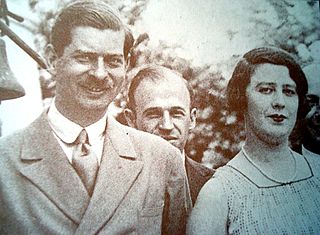
Magda Lupescu, later officially known as Princess Carol of Hohenzollern-Sigmaringen, was the mistress and later wife of King Carol II of Romania.

Gheorghe G. Mironescu, commonly known as G. G. Mironescu, was a Romanian politician, member of the National Peasants' Party (PNȚ), who served as Prime Minister of Romania for two terms.
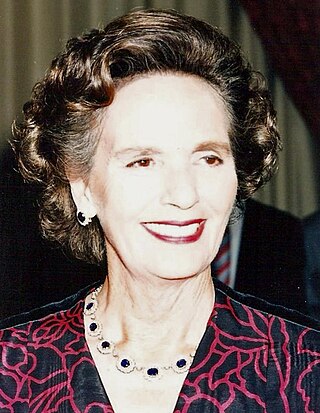
Anne was the wife of King Michael I of Romania. She married Michael in 1948, the year after he had abdicated the throne. Nonetheless, she was known after the marriage as Queen Anne.

Leopold, Prince of Hohenzollern was the head of the Swabian branch of the House of Hohenzollern, and played a fleeting role in European power politics in connection with the Franco-Prussian War.
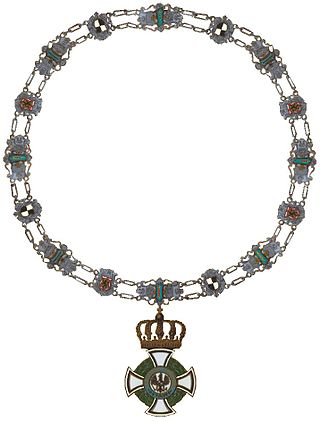
The House Order of Hohenzollern was a dynastic order of knighthood of the House of Hohenzollern awarded to military commissioned officers and civilians of comparable status. Associated with the various versions of the order were crosses and medals which could be awarded to lower-ranking soldiers and civilians.

William, Prince of Hohenzollern was the eldest son of Leopold, Prince of Hohenzollern and Infanta Antónia of Portugal.
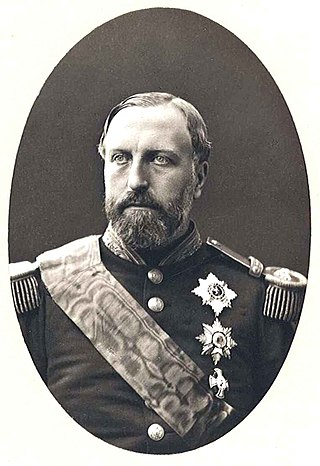
Prince Philippe of Belgium, Count of Flanders, was the third born and second surviving son of King Leopold I of Belgium and Louise d'Orléans. He was the brother of Leopold II of Belgium and Empress Carlota of Mexico.

The National Decorations System of Romania is divided into six categories, listed below. It was re-established in 1998 after a 50-year period in which Romania used a Soviet-style system of decorations. It is very similar to the system used in Romania during the interwar period.

Frederick, Prince of Hohenzollern was the eldest son of William, Prince of Hohenzollern and Princess Maria Teresa of Bourbon-Two Sicilies. He had a twin brother, Franz Joseph, Prince of Hohenzollern-Emden, who was born a few minutes after he was.

Prince Johann Georg of Hohenzollern was a German prince, and through his marriage to Princess Birgitta of Sweden, was brother-in-law of King Carl XVI Gustaf of Sweden.

The Order of Carol I was the highest ranking of the Romanian honours of the Kingdom of Romania until the founding of the Order of Michael the Brave in 1916 by King Ferdinand I of Romania. It was instituted on 10 May 1906 by King Carol I to celebrate the Ruby Jubilee of 40 years of his reign.
Nicolae N. Săveanu was a Romanian politician and academic.

